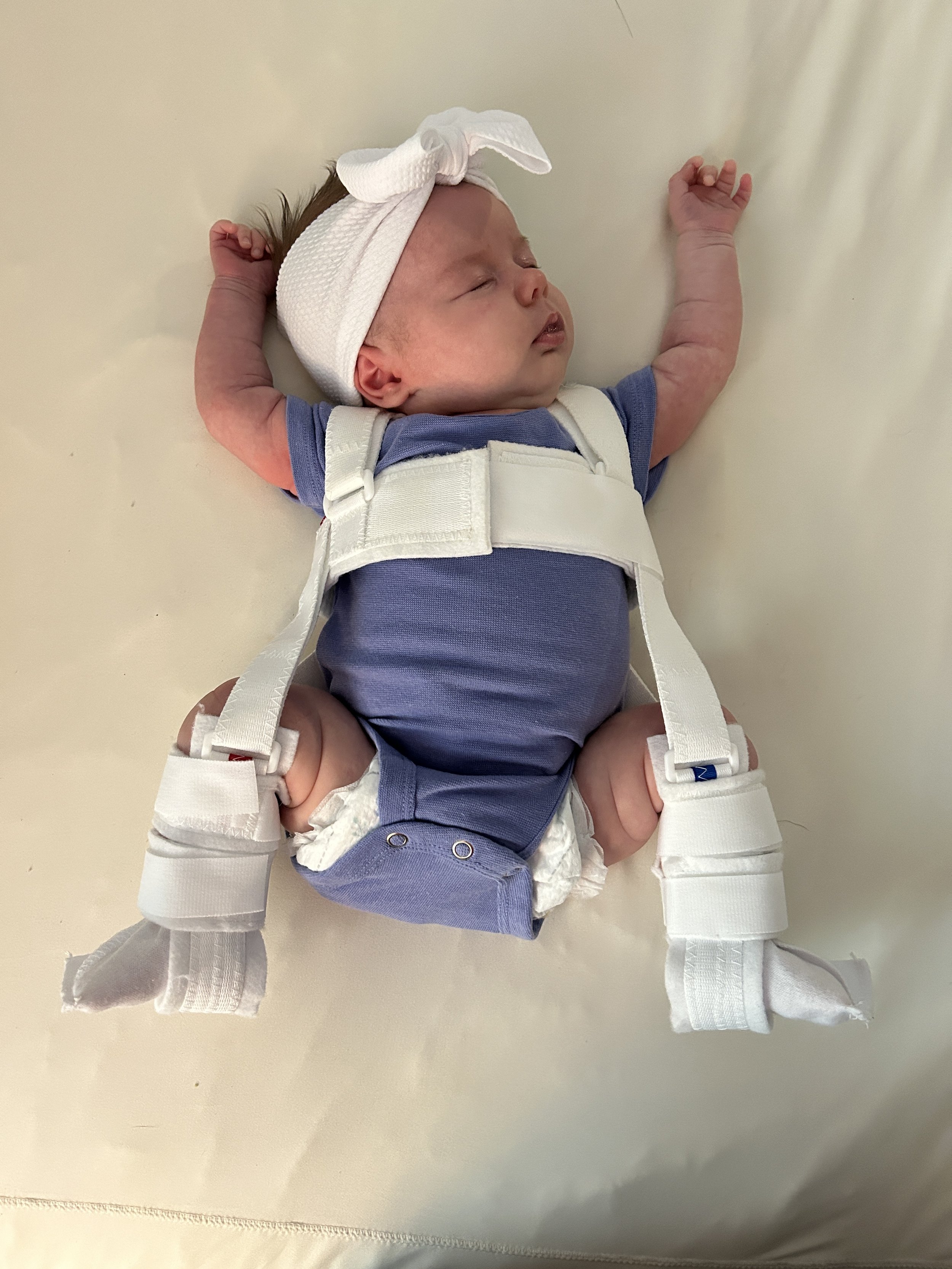MÈRE Stories: Elizabeth Hood Gilliam
My whole life, I knew I was meant to be a mom. While other little girls were dreaming about ponies or Barbie’s Dream House, I was wandering the baby clothes aisle, mentally dressing my imaginary children. My mom still jokes that I skipped the toy aisle completely. I didn’t want dolls—I wanted babies.
When my husband and I got married in 2020, I was 28, and we had a plan: start a family around age 30. Simple enough. Fertility issues? Please. That happened to other people. Unlucky people. Not me.
We started trying right after my 30th birthday and got pregnant within a couple of months. Easy. Too easy. We were over the moon and made the classic move—announced the pregnancy after the first trimester. Because once you’re in the “safe zone,” you’re, well… safe. Right?
Wrong.
At our next ultrasound, the technician got that weird tight smile and quickly shuffled out to find the doctor. My heart dropped.
We were told the baby had a cystic hygroma, often linked to chromosomal abnormalities. We were referred to maternal-fetal medicine, and in less than 24 hours, we went from imagining nursery themes to grieving a future that had disappeared.
When we arrived at maternal-fetal medicine, there was no heartbeat.
No options.
No warnings.
Just silence and clinical paperwork.
Within 15 minutes of being told our baby was gone, we were ushered into a fluorescent-lit room with a genetic counselor who had the bedside manner of a wet rag.
She grilled us for two hours about our family histories while we sat in shock, mourning our unexpected loss.
The grief was already unbearable, but the medical experience? Somehow worse. I wasn’t offered choices—just a D&C, presented like a lunch special. “I’m sure you don’t want to pass the baby at work,” the doctor said, casually. I didn’t Google anything. I didn’t ask questions. I just nodded.
The D&C was done on a general surgery floor with people recovering from rotator cuff repairs. No one seemed to understand why I was crying. “Are you okay?” they kept asking.
No. No, I wasn’t.
Afterward, the physician handed my baby—in a literal box—to my husband and asked if he wanted to mail it for genetic testing or if their office should do it. I kid you not.
My periods never returned to normal. I was always a “wake-up-in-the-middle-of-the-night-to-change-your-tampon” kind of girl, and suddenly I was barely spotting.
Something was wrong.
But my OB brushed me off more times than I can count. I finally talked to my GP, who recommended a fertility consult just for “peace of mind.”
That’s how I landed at PREG—and thank God I did.
The providers there were angels in scrubs. They listened. They cared.
After testing, I found out I had Asherman’s Syndrome—scar tissue in the uterus, likely caused by my D&C. It was devastating. My husband, of course, had “super sperm,” which made me feel even worse.
What followed was two years of surgeries, failed treatments, and enough hormonal medications to make me cry at Swiffer commercials. I even traveled to Boston to have a hysteroscopy while awake.
Spoiler: still didn’t work.
Eventually, Dr. Cookingham at PREG helped me try a new experimental protocol. It felt like our Hail Mary—and then, just days before we were supposed to start, she told me she was leaving the clinic. I boo-hooed. I was transferred to another MD and my amazing Nurse Practitioner, Haley Pollock, cheered me on like it was her full-time job.
And against all odds, the experimental treatment worked. IUI worked. We were pregnant.
Pregnancy after loss and infertility is beautiful… and absolutely terrifying.
I loved being pregnant, but every ultrasound felt like a ticking time bomb.
Is this the one where the dream shatters again?
Thankfully, our baby girl was perfect.
Due to my Asherman’s, we opted for a planned C-section. There was some concern about postpartum hemorrhage. A planned C-section seemed like the most controlled environment. After the chaos that was trying to get pregnant, I wanted control. I thought, “Compared to what I’ve been through, this will be a breeze.” Ha. Wrong again. I hated being awake during the surgery.
The pain afterward was brutal, and the guilt? Even worse. I had waited years for this. Why wasn’t I blissfully glowing?
Postpartum hit me hard.
Our daughter had a milk allergy and was diagnosed with hip dysplasia. The first 12 weeks were a blur of spit-up, hormone crashes, harness fittings, and crying (hers and mine).
I didn’t feel like myself. I felt guilty for struggling. But eventually, I whispered it aloud: “I’m not okay.” And that made all the difference. Help came. Community came. Healing came.
During our infertility journey, we also decided to become foster parents. If I couldn’t be a mom biologically, why not mother a child who needed one? In August 2023, a DSS stork dropped the most perfect little boy on our porch.
We’ve loved him ever since—and we’re in the process of adopting him now. I know that without the long, painful road of infertility, we never would’ve found our son.
And that thought alone makes all of it worth it. He was the answer I never knew I needed.
“Motherhood isn’t always soft lighting and sleepy baby snuggles.
Sometimes it’s hospital gowns, heartbreak, and hip harnesses.
But if you’re in a trench right now, I promise you—you won’t be there forever.
There are better days ahead. And remember: social media is a highlight reel.
You’re doing better than you think. You got this, Momma!”
— Elizabeth Hood Gilliam




